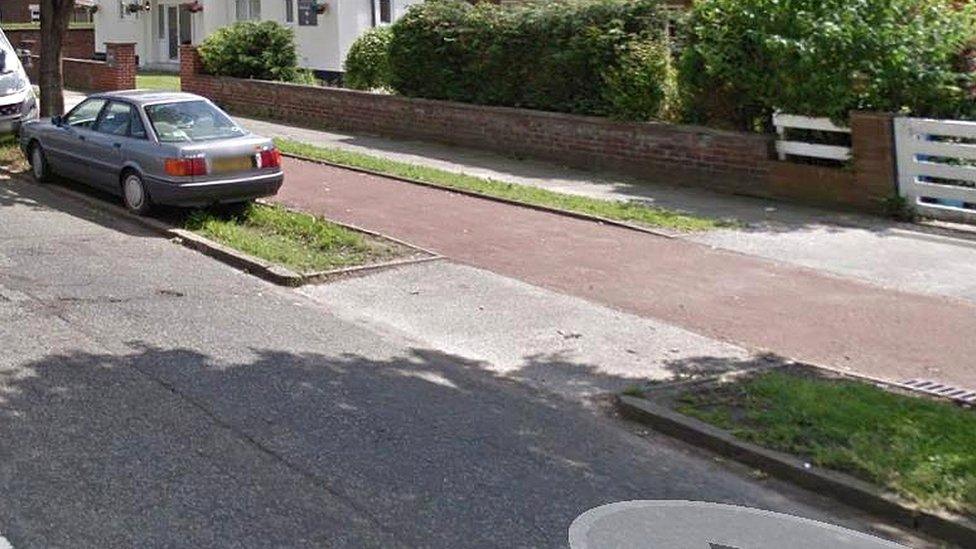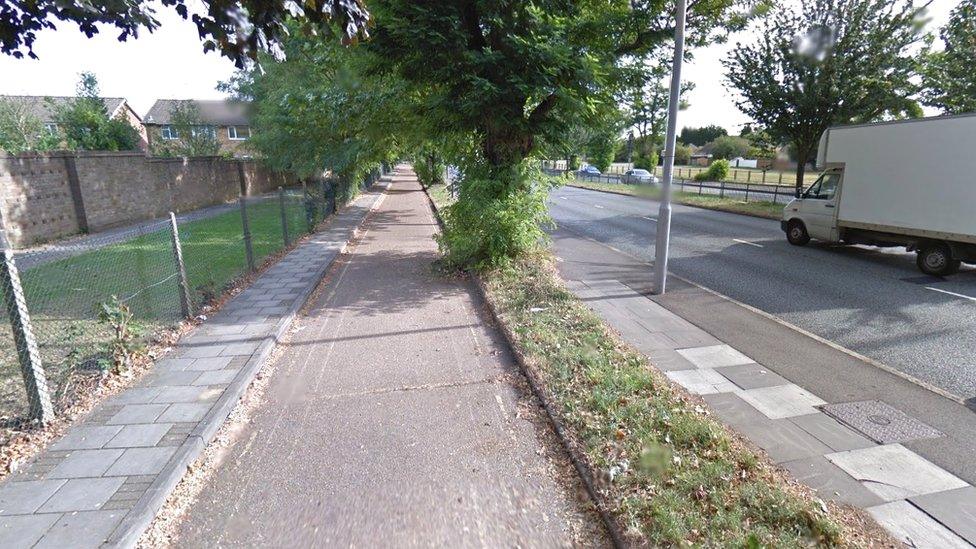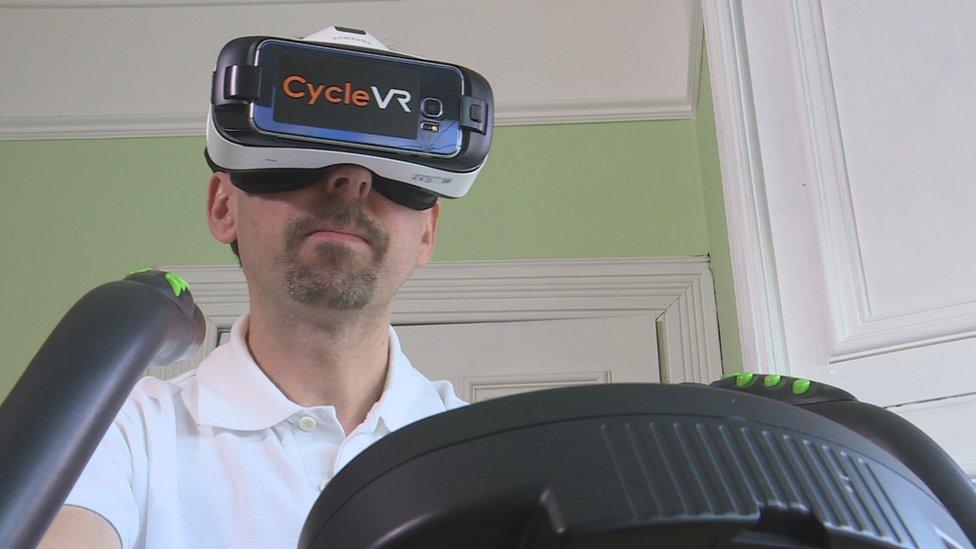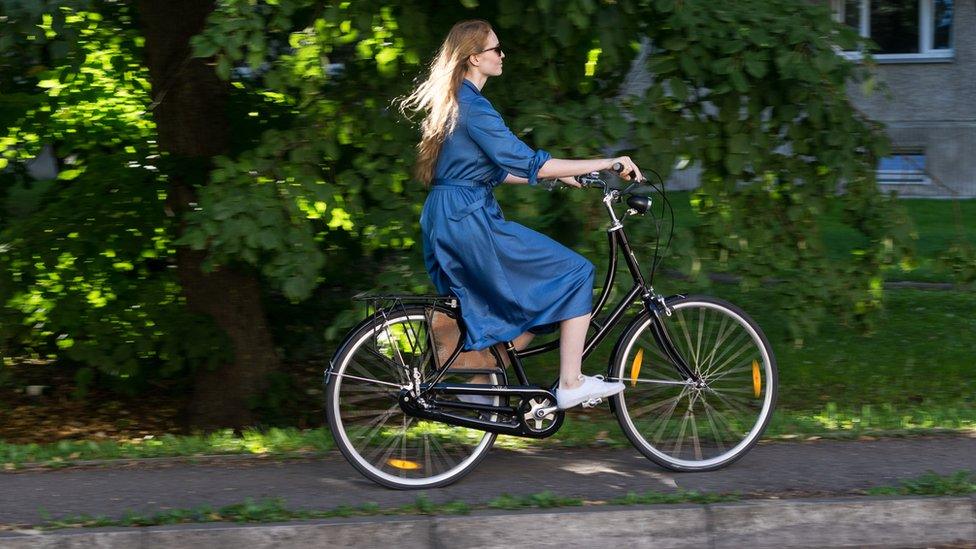Google Street View used to discover 'lost' cycle ways
- Published

Some of the cycle ways retain a faint hint of their original red colour
A vast network of forgotten cycle ways across the UK has been rediscovered with the help of Google Street View.
Historian and cycling enthusiast Carlton Reid found the routes, which were created between 1934 and 1940, after scanning for evidence of them online.
They were originally put in place by the Ministry of Transport, but many fell out of use after World War Two.
Mr Reid is now part of a campaign to reinstate some of the routes.
"We might see them every single day and not realise what they are - they're very much hidden in plain sight," he said.
By carefully looking at images on Google Street View, Mr Reid was able to discern residual evidence of the cycle ways - sometimes appearing like second pavements or merely depressions by the side of the road.
Route map
A map showing the locations of the routes, external across the UK has also been posted online as part of the campaign.
"Urban planners often say, 'Oh, there's no place for cycling, we can't put these things in.'
"This project says we have got the space, sometimes [the cycle ways] are already there," said Mr Reid.
The routes had been a vivid red when first created, he told the BBC, but the colour had faded over time in many cases.
"There are some in Manchester and Nottingham that are still pink now in patches," he said.

Mr Reid says he has researched the cycle ways for more than a year
Mr Reid said the paths were often very wide, allowing cyclists lots of room to use them.
However, they apparently fell out of use after World War Two, when the UK experienced a huge boom in car ownership.
Having spent more than a year researching the routes online, Mr Reid believes he has found 280 miles of the "lost" network.
A Kickstarter campaign, external to raise funds for the project has been started by Mr Reid and his collaborator, John Dales, an urban planner.
The campaign reached its initial funding goal of £7,000 ($9,000) within three days of launching and has now accrued more than £10,000 in pledges.
Should the project gather enough support, Mr Dales intends to make formal recommendations to the relevant authorities that some of the cycle ways be reinstated.

Sometimes cars mistake the cycle ways for roads, because they are so wide
"We will also be working hard on getting the Department for Transport to also provide some national cash," said Mr Reid.
"After all, it can be shown that the Ministry of Transport, its predecessor organisation, was 75 years ahead of its time."
The project has received praise from cycling groups.
"It would be wonderful to see this legacy updated, restored and protected, not only because these cycle ways would be useful in their own right, but also because they would serve as an inspiration for developing a comprehensive cycle network, using the space we already have," said Mark Treasure, who chairs the Cycling Embassy of Great Britain.
Reinstating the routes would make cycling safer and improve traffic flow, suggested Charles Hobbs, owner of "Charlie the Bikemonger", a bicycle shop in Dorset.
"It's great to see these rights of way being rediscovered," he told the BBC.
"These are lost assets of cycling, something cyclists have a right to use."
- Published23 January 2017

- Published20 January 2017

- Published15 September 2016

- Published13 October 2015
